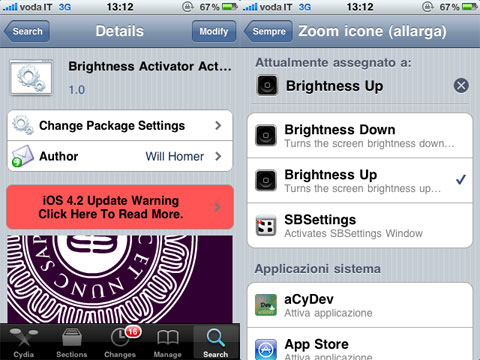
The battery testing procedure is described in detail in case you're interested in the nitty-gritty. We've established this usage pattern so that our battery results are comparable across devices in the most common day-to-day tasks.
#Iphone 12 brightness pro
The endurance rating above denotes how long a single battery charge will last you if you use the Apple iPhone 12 Pro for an hour each of telephony, web browsing, and video playback daily. Our battery tests were automated thanks to SmartViser, using its viSer App. The standby performance turned out a bit worse than on the iPhone 12 and 11 Pro, and that's why the final endurance rating is a bit lower, too. The call and web times are similar to the iPhone 11 Pro, but in contrast, the older model lasted north of 15 hours of video playback. The iPhone 12 Pro did well on our battery test - it posted similar talk, web, and video times as the iPhone 12. The phone supports fast wired and wireless charging, if you purchase the compatible power adapters, that is. The Apple iPhone 12 Pro has the same 2,815mAh battery as the regular iPhone 12, which means it's about 7% smaller than the iPhone 11 Pro.

The iPhone 12 Pro fully supports DCI-P3, and it automatically switches to this color space when DCI-P3 content is sent to the screen.Īs usual, the iPhone 12 Pro can maintain such a great color accuracy across all brightness levels, even at the lowest point of 1.8 nits. The iPhone 12 Pro screen offers excellent color accuracy - we measured an average deltaE of 1.9 and a maximum deviation of 3.0 against sRGB targets. Samsung Galaxy Note20 Ultra 5G (Max Auto) There is no maximum auto boost on any iPhone, though you'd never miss that with such a bright screen. The minimum brightness is impressively low at 1.8 nits.

Both phones offer peak brightness of up to 1,200 nits.Īnd that's exactly what the screen offers - we measured 802 nits of maximum brightness on the iPhone 12 Pro with our particular test setup. Well, we'd have to wait for the iPhone 13 Pro, we guess.Īpple advertises 800 nits of typical brightness on the iPhone 12 Pro display and 600 nits for the iPhone 12's.
#Iphone 12 brightness android
If you are coming from the Android camp, where even mid-rangers already have high refresh rate displays in 2020, the fact that the expensive iPhones don't have that will sting a little. This will hardly be a deal-breaker for someone who is already locked into the iOS ecosystem or is still using an older device with a 60Hz refresh rate by another manufacturer. Yes, Apple didn't bring the rumored high refresh rate screen. Otherwise, we are still looking at an OLED screen with a giant notch, 60Hz refresh rate, and 120Hz touch sampling. The minor resolution bump is just enough to maintain the same pixel density of 460ppi. The screen is slightly larger this time - with a 6.1-inch diagonal vs.

In its essence, the iPhone 12 Pro is the same type of screen used in the iPhone 11 Pro. The Apple iPhone 12 Pro screen also supports True Tone adjustments, Wide Color support, and it has the Haptic Touch feature provided by the Taptic Engine. You can enjoy high-res HDR content on all known streaming platforms. The screen supports HDR10 and Dolby Vision. It has Ceramic Shield protection and oleophobic coating for better smudge resistance. So, the iPhone 12 Pro has a 6.1" OLED screen of 1,170 x 2,532 pixels or 460ppi. Excellent AMOLED screen, still 60Hz though


 0 kommentar(er)
0 kommentar(er)
